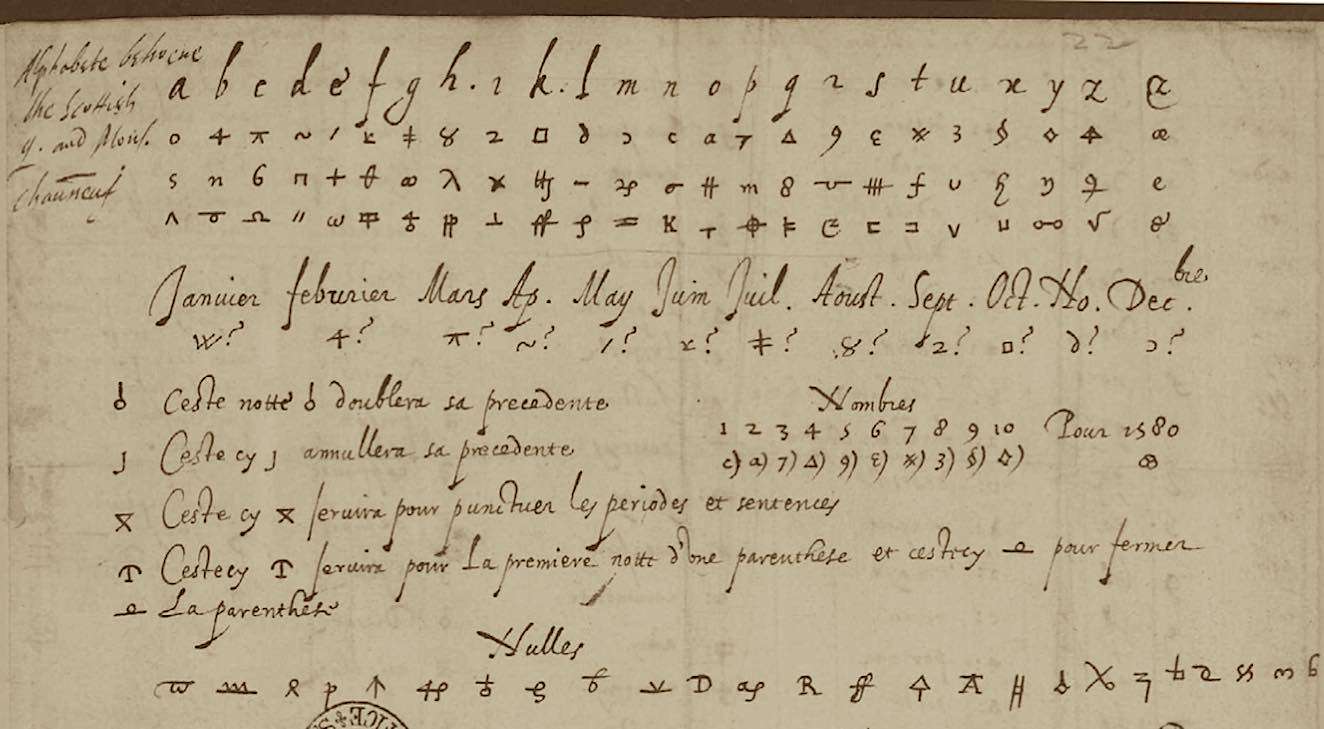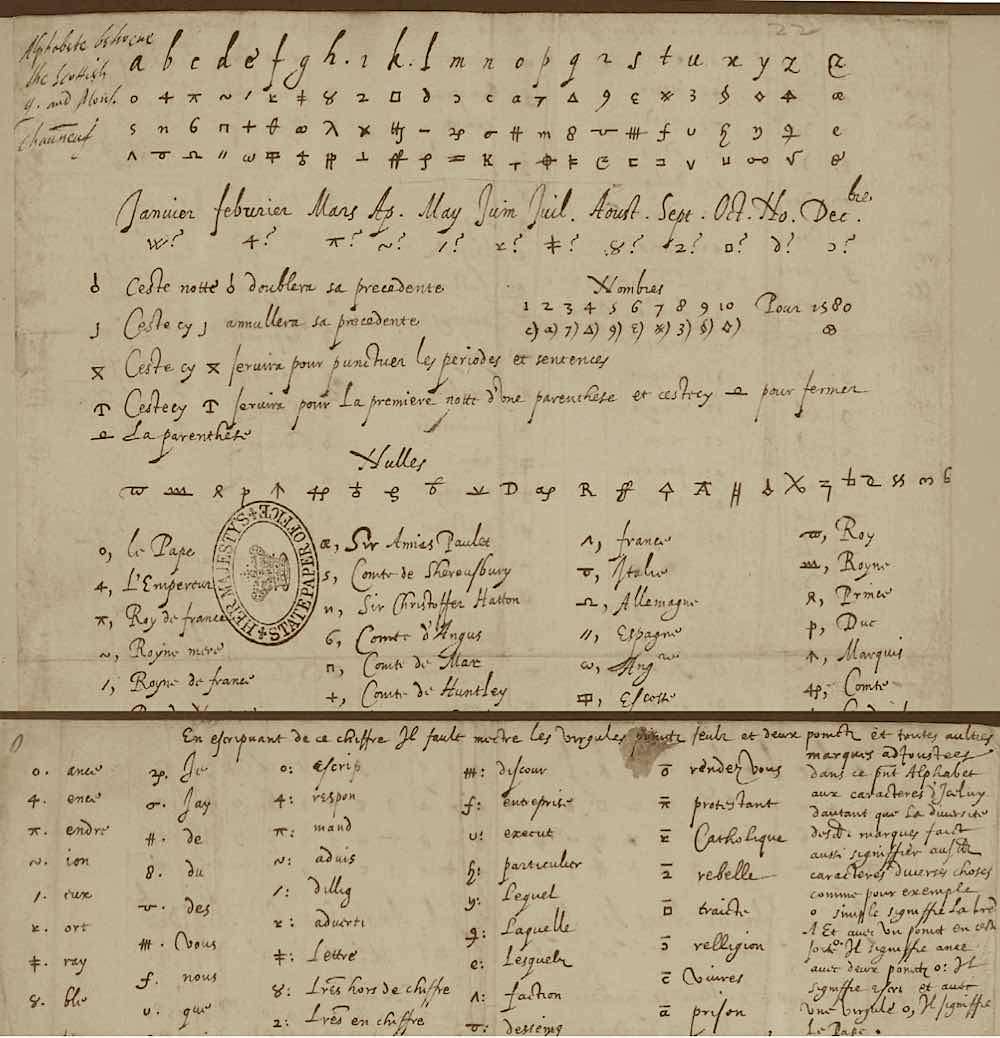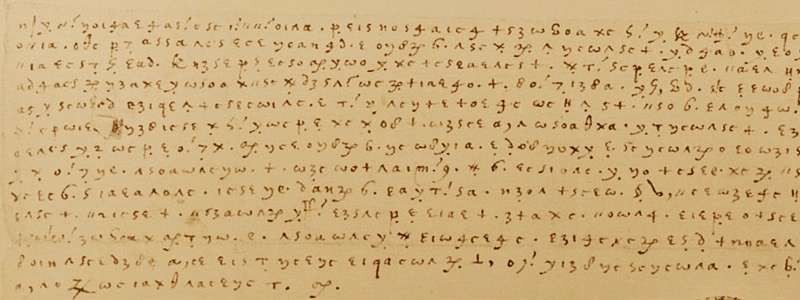Work Begins on Notre Dame's New Spire-On Track for a December 2024 Reopening
It's been almost 4 years since the iconic building was devastated by a fire, and the reconstruction has been going according to schedule.

An international cryptology team accidentally discovered a series of coded letters written by Mary Queen of Scots and deciphered them.
The contents of those letters that have so far been decoded reveal the thoughts, plots, and emotions penned by Mary while she was imprisoned by Queen Elizabeth I, and were believed to have been lost entirely.
The cipher which Mary used was so extensive that it was entirely lost upon the bibliographers at the Bibliotheque Nationale de France who had written them and what they contained. They ended up shoved in a collection pertaining to correspondences with the Italians.
When cryptographer and computer scientist George Lasry, piano and music professor Norbert Biermann, and physicist Satoshi Tomokiyo came across the letters, they quickly realized they "had nothing to do" with Italy.
Their detective work revealed verbs and adverbs often in the feminine form, several mentions of captivity, and the name ‘Walsingham' which arose the suspicion that they might be from Mary.
Using computerized and manual techniques, the research team decoded the letters written from 1578 to 1584. They show the challenges Mary faced maintaining links with the outside world, how the letters were carried and by whom, and the brilliance of her spy/correspondence network.
Key themes include complaints about her poor health and conditions in captivity, and her negotiations with Queen Elizabeth I for her release, which she believes were not conducted in good faith. Her mistrust of Elizabeth's spymaster Sir Francis Walsingham is also apparent, as well as her animosity for Robert Dudley, Earl of Leicester and a favorite of Elizabeth.
Mary also expresses her distress when her son James—the future King James I of England, is abducted in August 1582, and her feeling they have been abandoned by France.

Born Mary Stuart, Queen of Scotland in 1542, she spent much of her life in captivity, first at the hands of Scottish Protestants for her religious faith as a Catholic, and then by her cousin Queen Elizabeth I, who considered her a threat to the throne. Beyond Albion, Mary found more allies in France, especially among Catholics.
Most of her letters are addressed to Michel de Castelnau de Mauvissière, the French ambassador to England. She was involved in several conspiracies to incite rebellion amongst Catholics in Britain, and her deeply-coded letters helped conceal her complicity.
"Upon deciphering the letters, I was very, very puzzled and it kind of felt surreal," explained the lead author of the paper published on the work, Dr. Lasry. "We have broken secret codes from kings and queens previously, and they're very interesting, but with Mary Queen of Scots, it was remarkable as we had so many unpublished letters deciphered and because she is so famous."
Lasry and his team deciphered 57 letters and published them in the journal Cryptologia on the 436th anniversary of Mary's execution (Feb. 8th), aged 44, at Fotheringhay Castle in Northamptonshire.

"Mary Queen of Scots left an extensive corpus of letters held in various archives," explain the authors. "There was prior evidence, however, that other letters from Mary Stuart were missing from those collections, such as those referenced in other sources but not found elsewhere."
"The letters we have deciphered…are most likely part of this lost secret correspondence."
During her time in captivity, Mary communicated with her associates and allies because of extensive efforts made to recruit messengers and to maintain secrecy.
The existence of a confidential communication channel between Mary and her supporters was known to the English government at the time, but the channels appear to be so strong that for decades, none of the letters fell into the wrong hands.
Eventually, a sterner jailer was appointed who managed to intercept a plot to install her on the English throne, enough to charge her with treason and pass an execution sentence.
"Due to the sheer amount of deciphered material, about 50,000 words in total and enough to fill a book, we have only provided preliminary summaries of the letters, as well as the full reproduction of a few of them, hoping to provide enough incentive to historians with the relevant expertise to engage in in-depth analysis of their contents, to extract insights that would enrich our perspective on Mary's captivity," the codebreakers write.
SHARE This Super-Sleuth Work And Fascinating History With Your Friends…
Be the first to comment